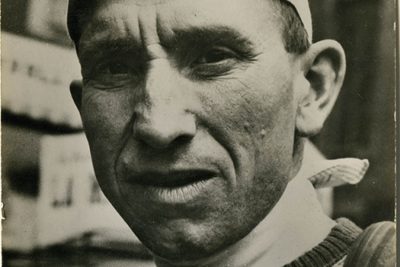What is a Flahute?

The type of rider who wins races where 150 riders start and one finishes—that’s a Flahute.
A Flahute thinks the Tour de France is just a bunch of long training rides. A real race is one where it’s pouring rain, it’s cold, the roads are treacherous, and the prize list is about the same as your 8-year-old neighbor’s allowance. When you’re a Flahute, that’s racing.
To put it another way, if your cycling spirit dampens at the sight of rain, you sure as shoot ain’t a Flahute.
The term is believed to have been coined after the Second World War by French journalists, who used it endearingly to describe their Belgian neighbors to the north. It specifically refers to cyclists from the Flemish-speaking northern provinces of Flanders; racers who rode the legs off their rivals over the pavé and through cold, rainy conditions.
These racers focus on such classics as the Tour of Flanders and Paris-Roubaix, those tough northern classics filled with some of the worst roads and weather imaginable in bike racing. The only thing tougher than the races themselves are the guys that win them.
So who are the Flahutes?
A rider like Eddy Merckx, who won 5 Tours de France and 5 Giros d’Italia, in spite of being a Flahute. Roger de Vlaeminck, who won Paris-Roubaix on 4 separate occasions. Andrei Tchmil and Johan Museeuw and Peter van Petegem, who all battled it out for dominance in the mid-1990s. Riders like Brieke Schotte, Rik van Steenbergen (Rik I), and Rik van Looy (Rik II) in the post-WWII years.
Jacques Anquetil knew better than to even try, while Bernard Hinault was one of the rare Frenchman who could contemplate qualifying. Sean Kelly was the first — and only — Irish Flahute. Lance Armstrong didn’t have the balls to be a Flahute (yes, pun intended).
Tom Boonen and Fabian Cancellara are probably the two most recent examples, but Greg van Avermaet and Philippe Gilbert are making strong cases for themselves. Wout van Aert and Mathieu van der Poel certainly have the potential, as they make their transitions to road racing from cyclocross.
One of the best descriptions of the Flahute that I’ve found is in Graham R. Jones’ article titled “Flahute and ‘The Lion of Flanders’”. Go read it, then report back here for more great descriptions of what makes a Flahute; this time in a two-part article on Walter Godefroot. Read part one and part two.
